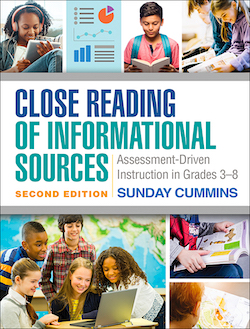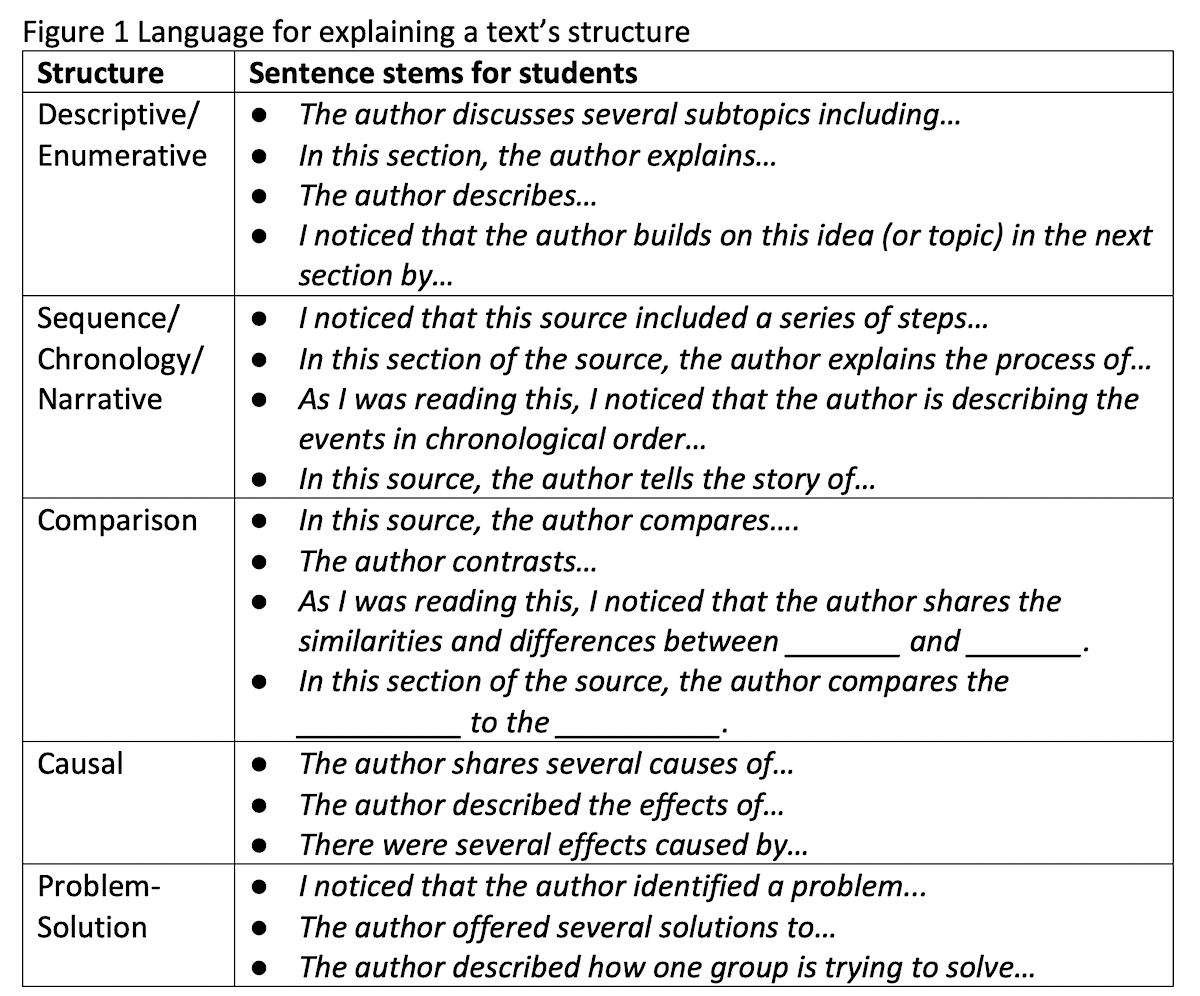When Should We Skip the Graphic Organizer?

Quite often when we hand students a graphic organizer to complete while analyzing a text’s structure, we’re doing the thinking for them.
We’re telling them how the author has organized and developed the ideas in that source. The students just have to find the details that fit into the graphic organizer. This is a missed opportunity for kids to engage in critical thinking of their own.
Providing students with graphic organizers related to text structures can also be problematic because many authors use multiple structures in a source. For example, an article about the latest drone technology may appear to be descriptive, describing what a drone is and how drones are used.
But what about when the author also addresses the potential effects drones may have on our everyday lives? And how drones may be violating our right to privacy? Within this article, the author employs multiple structures – descriptive, causal, and problem-solution – in pursuit of providing important information about drones.
If our students are going to make the most sense of an article like this, they need to be able to think about text structures conceptually and flexibly. How do we help students learn to think this way?
1. Introduce language students can use to explain a text’s structures.
When teaching students to recognize text structures, many times we post charts or provide bookmarks that describe traditional structures like descriptive or enumerative, chronological, comparison, causal, and problem-solution. Referring students to these resources can definitely help them develop an understanding of how authors might structure their sources. But many of our students need more than this.
They need language that helps them describe their thinking regarding an author’s use of a structure or multiple structures. If they can explain their thinking, then they are more likely to understand and recognize other authors’ use of these structures.
This kind of language can be especially helpful when students are thinking about the information in more than one source. Being able to compare and contrast two or more authors’ use of various structures can only serve to deepen students’ understanding of the content and expand their recall.
In my teaching and coaching practice I watch for opportunities to purposefully introduce language students can use (see Figure 1). This might be in the form of sentence stems I offer orally, in the moment, when I see a student hesitate or struggle. Or when I lean in to listen to partner or small group conversations, I might jot down a word or phrase on a sticky note and leave it with them to reference as they continue their discussion.
Another option is to close a conversation with students by highlighting some of the language they used to explain their thinking, jotting that language on a piece of chart paper for all students to view later as a reference.
2. Engage in “prove It” conversations.
We want students to notice a text’s structure as a way to help them determine what is important in that source. Sometimes, though, our own answer to the question “What is this text’s structure?” may not be the one the students land on.
I remember working with a small group of fifth grade students reading an article about the difficulty of recycling smartphone devices. I was sure the text’s structure was a problem-solution structure. When I asked them to identify the text’s structure, they chose descriptive. Instead of saying, “No, that’s not right,” I asked them to “prove it to me.”
What followed was a substantive conversation that included annotating the article with text structure in mind. In the end, I was convinced that the text’s structure could also be considered descriptive.
More importantly, though, the students understood the information at a different level than they did after an initial read. They could explain what they’d learned and how the author had developed the ideas in the article, and talk about how the ideas in the article influenced how they regarded their own smart devices.
This doesn’t mean that students can’t be off. “Prove it” conversations may be opportunities for students to shift in their thinking (while also deepening their understanding of content in a source).
If students have to closely read a source, annotating for details that reveal the source’s structure and then share their thinking, they may arrive at a different conclusion about the structure of that source as a result of this experience. Either way, the students are more likely to understand the ideas in that source better.
3. Provide “create your own organizer” opportunities.
I am continually surprised by what students do when they are given choices about how to make sense of a source. With this in mind, encourage students to develop their own graphic map for organizing the information in a source or in multiple sources. As they try this out with a partner or on their own, observe and provide guidance at the point of need.
If a student is struggling to the point of frustration, generate an organizer together or return to traditional organizers and help them choose one. Over time, watch for that student to take on more of the work in organizing the information in a source (or multiple sources) or choosing/designing a graphic organizer on their own.
Using these ideas in remote learning
One last thought. In the midst of a global pandemic, our teaching may look very different this fall. Many of us may be teaching our students remotely. Assigning graphic organizers to analyze a text’s structure might feel like an easy “go to” activity for students to complete when we can’t be with them, when they are learning on their own at home. I’d resist.
Despite the obstacles this fall may present, there will still be room – even at a distance – to have “prove it” conversations, to provide the language students need to explain their thinking, to guide them as they create their own graphics for organizing their thinking.
Imagine it this way: this type of instruction stands to grow our students’ capacity for leading their own learning, especially when we can’t be in the same room with them.

Sunday is a graduate of Teachers College, Columbia University, and has a doctorate in Curriculum and Instruction from the University of Illinois, Champaign Urbana. Visit her website and read her regular blog posts on teaching information literacy. Follow her on Twitter @SundayCummins.
































